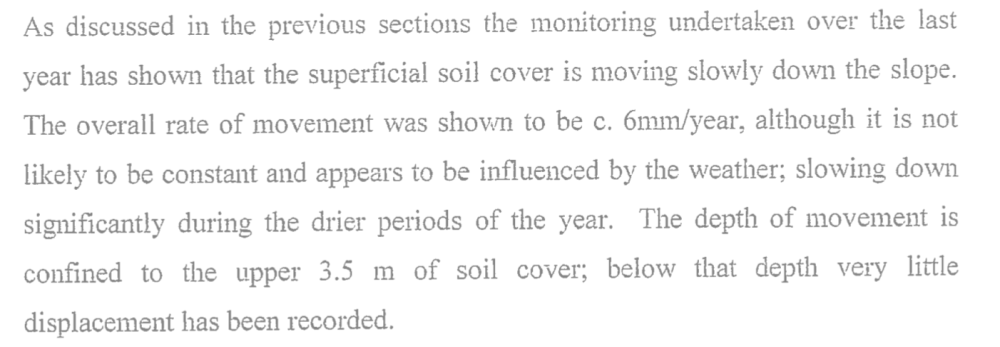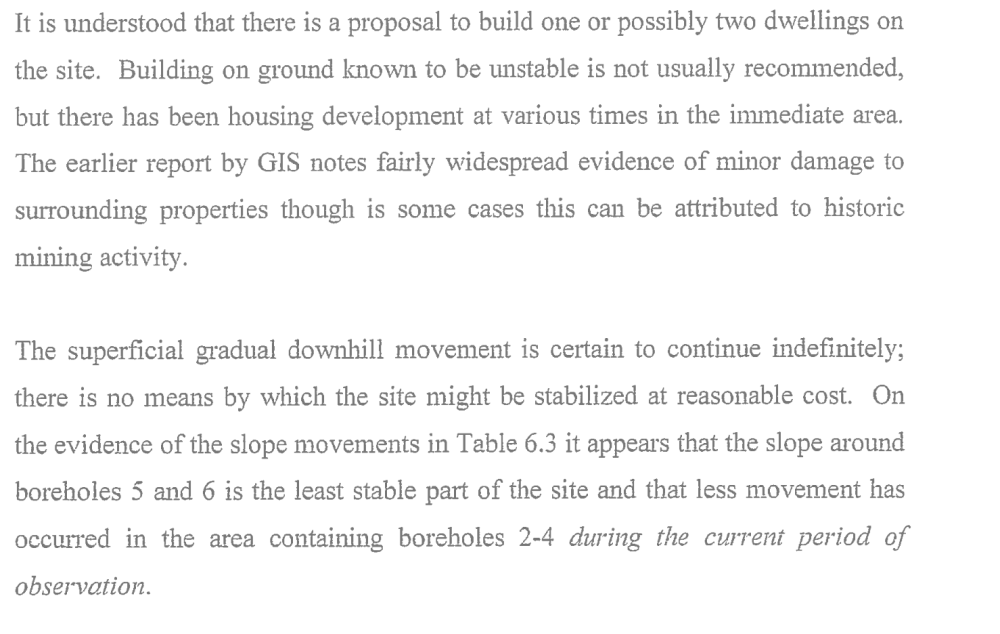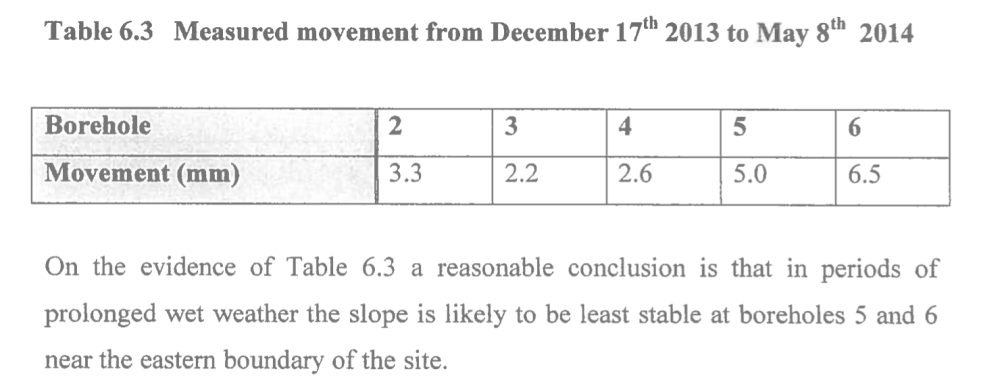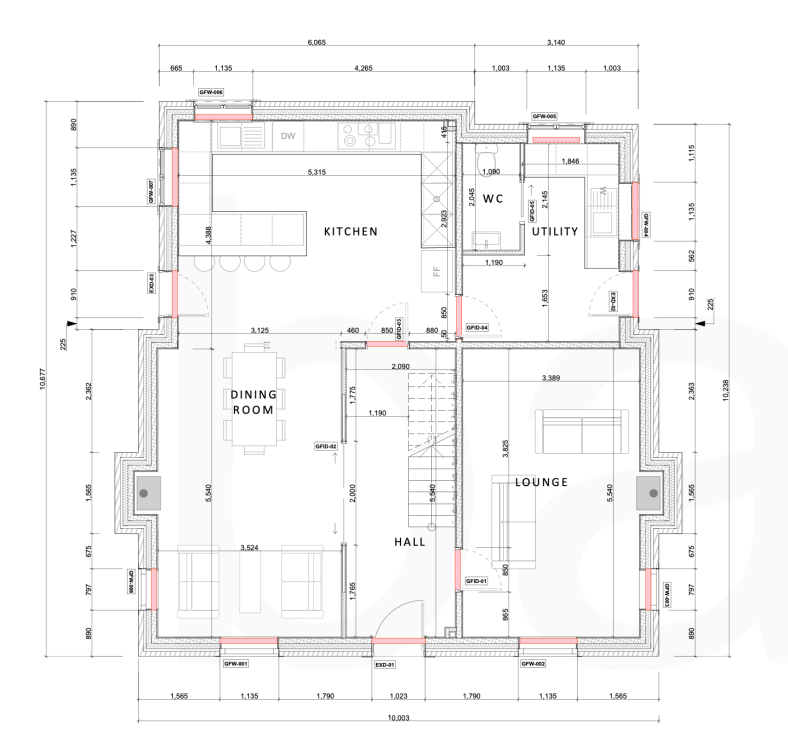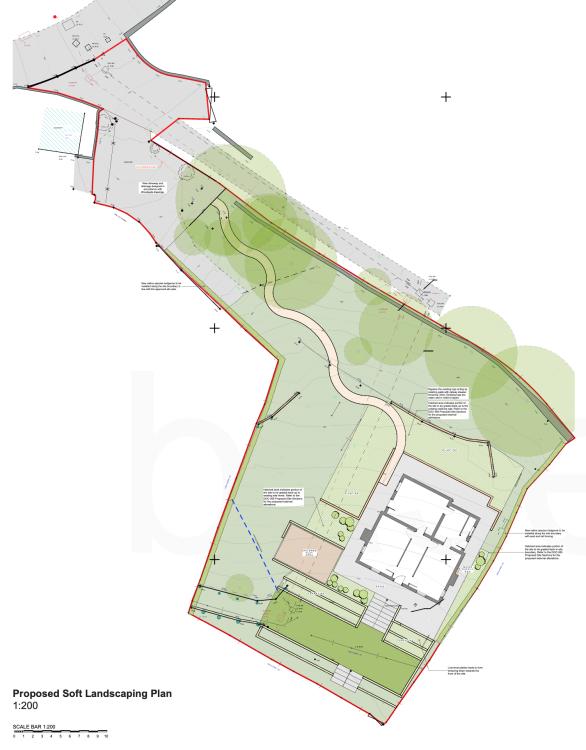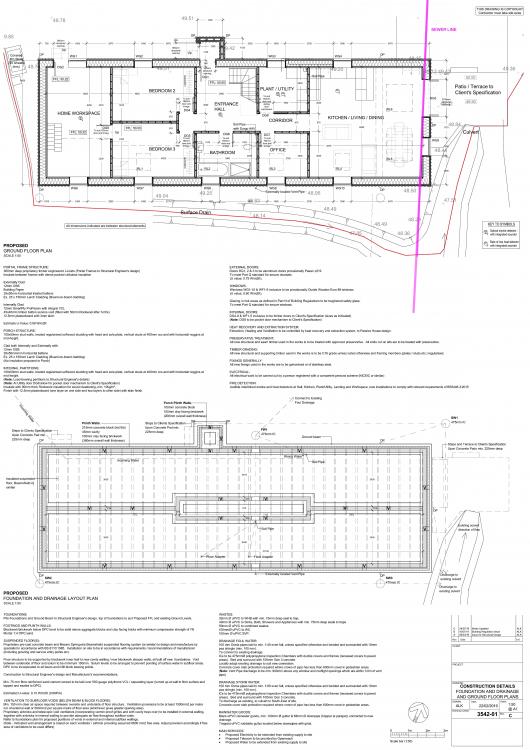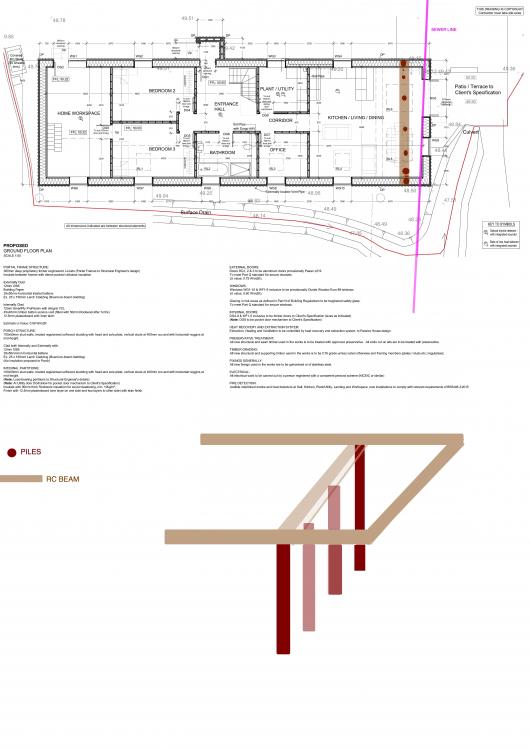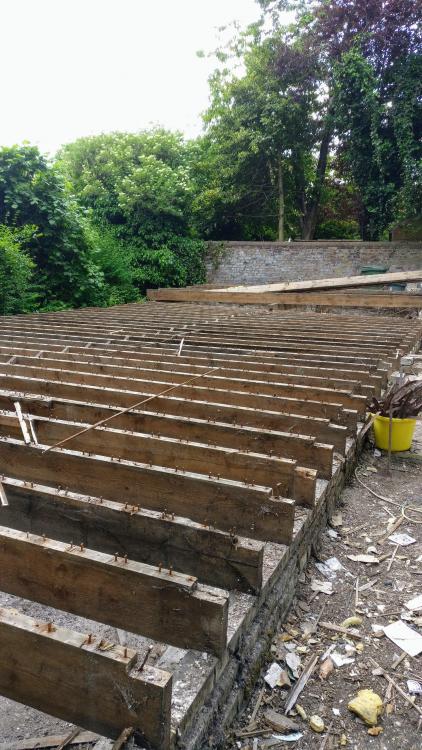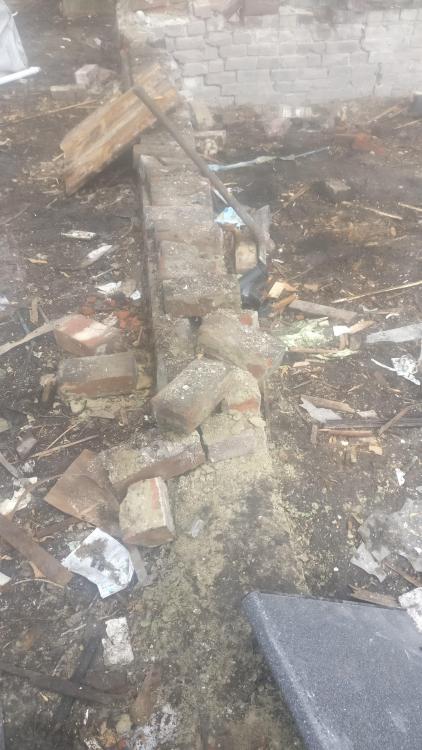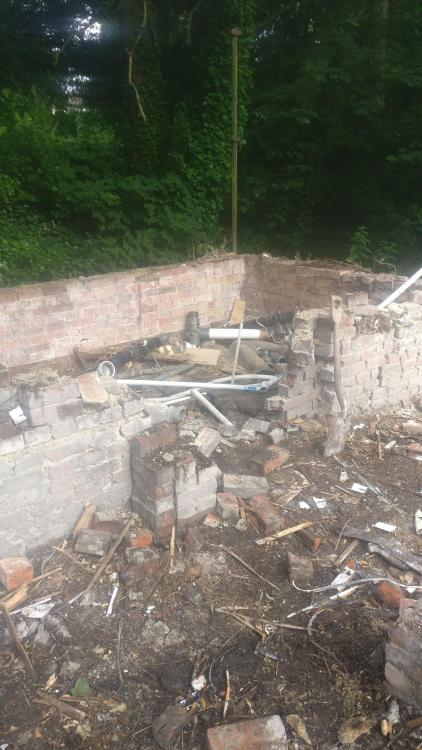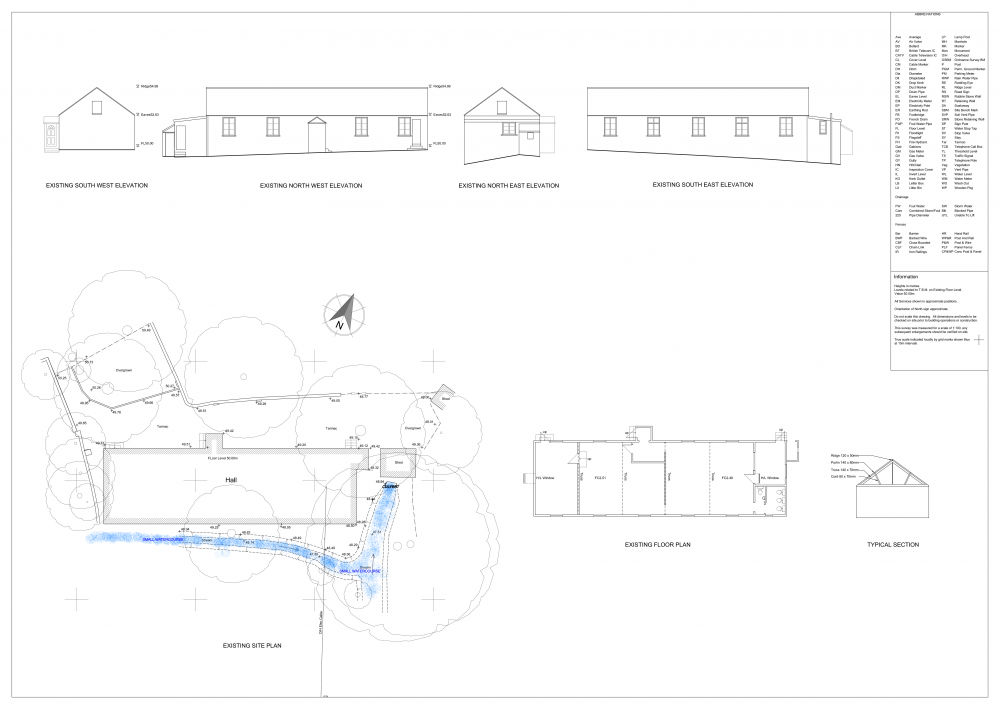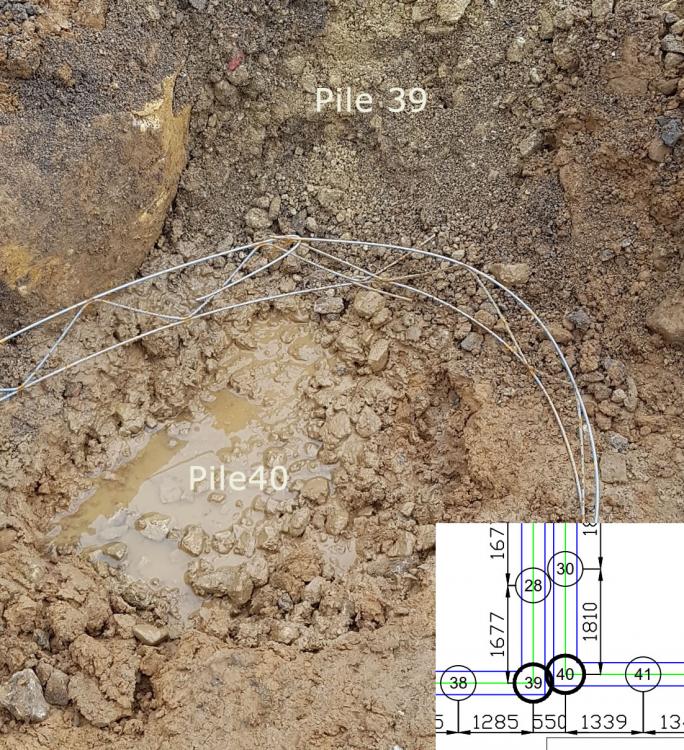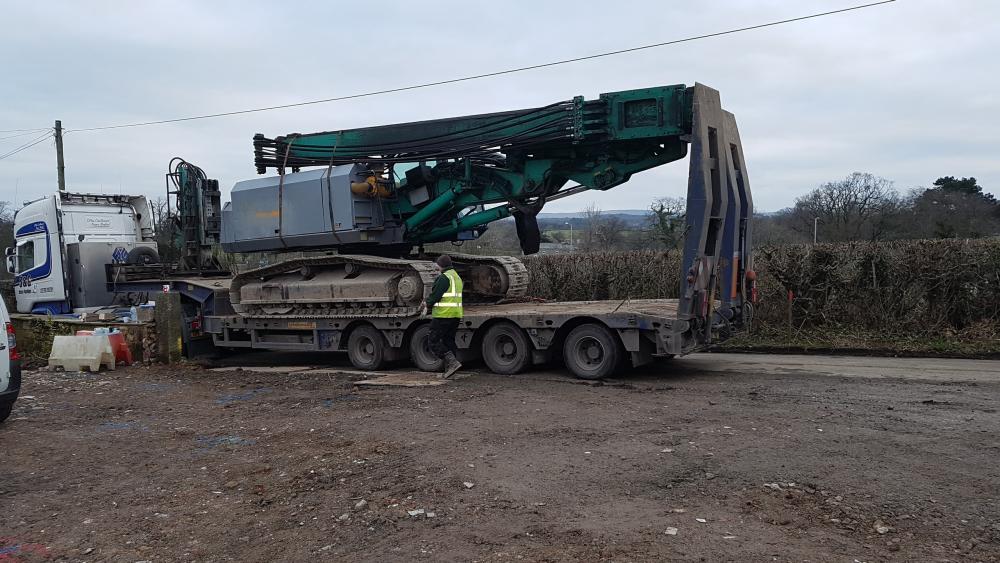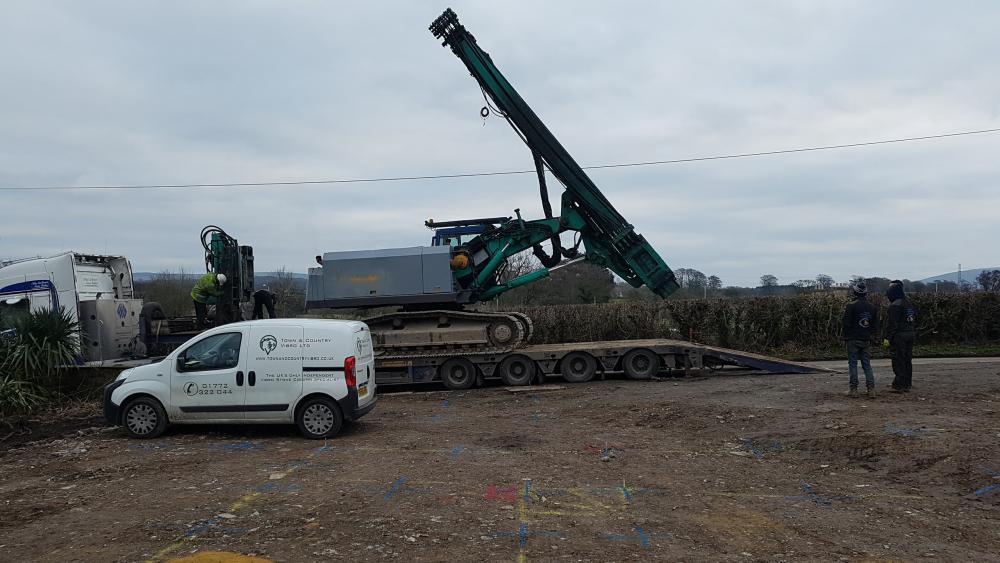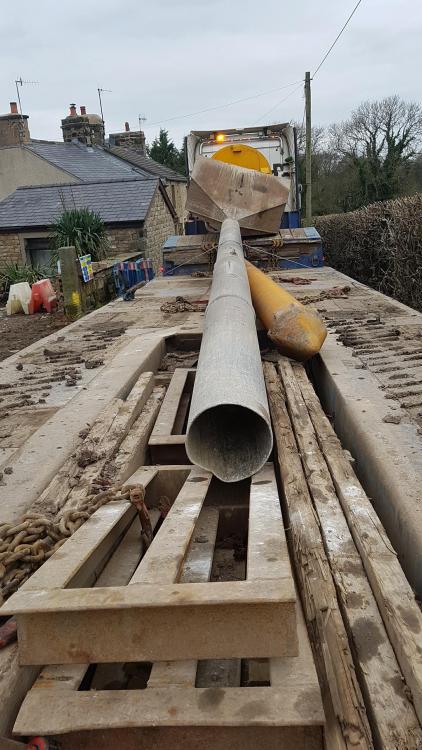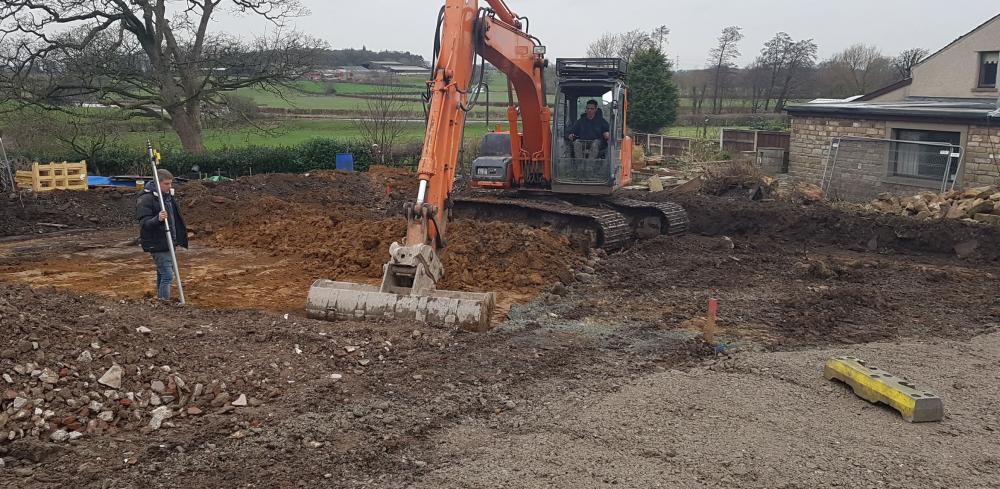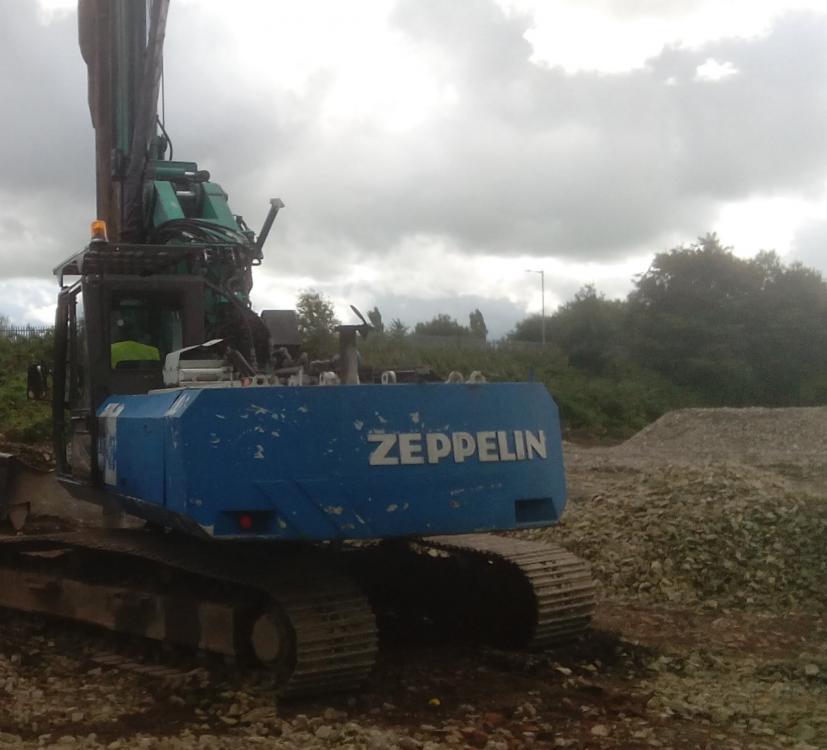Search the Community
Showing results for tags 'piling'.
-
We are working on a new self build project for our domestic residence, we need a company to assist with Piling for the foundation. We need 58 piles in total as per structural engineer drawings. We will appreciate any kind assistance. The location is in Leicestershire. Kind regards
- 1 reply
-
- piled foundations
- piling
-
(and 1 more)
Tagged with:
-
Hi All, I was hoping that I would be able to get some friendly advice which would help us decide on a sensible solution for the foundation design on our self build. During the planning phase we had an investigative ground survey, The report which was very extensive involving 6 piles drilled to various depths of 4.6 to 6.9m over the site, the soil was then tested for quality and the holes then monitored and tested for subsidence and water content over a 12 month period. The results of the test were that construction could be permitted but it was highlighted that some ground movement to the top 3.5m of superficial soil had moved down the slope during the test (6mm during the year of this test). In regards to foundation design the report summary recommended re-enforced deep trench foundations or a re-enforced concrete raft with a lightweight timber frame structure. After getting our planning approved we approached a structural engineer who reviewed our plans and report and also spoke with the ground investigation company to discuss the report before visiting the site to assess the project. Their recommendation was to having a piling solution due to the area and the work involved. For reference the property is a 10m x 10m square, and we are intending to go brick and block now we are having a piled foundation. Our site is sloping around 14-20 degrees, but the build will be on level ground so we will be cutting into the slope and installing a king post retaining wall behind the house to hold back the soil. There is already a log retaining in place which we will replace with something much better. It has held without moving for 10 years but as it's softwood it's now rotting away. The plot is also in a world heritage site with a history of coal mining so the ground is generally poor in our county. Planners and engineers are very wary in this historic area due to many period properties subsiding due to the ground conditions, sloping sites and traditional construction methods used in the older buildings. On the recommendation of the SE we approached several piling contractors for advice and quotes. The first company recommended and quoted for 35x 150mm driven piles driven to a depth of 5m. We were very happy so we booked him, he then supplied us with his structural engineering design but last week called up to say he couldn't do the work as he had spoken to another contracter who had worked in the area and said we needed augured piles rather than driven which was something he didn't do. I then went back out looking for a new piling firm and spoke with another contracter who was familiar with the area, he had actually done the piling for a build in the same street 10 years prior. He recommended that augured piles would be needed due to the ground conditions but his quote never transpired which was a shame, likely due to being so busy. I then spoke with another company, this company seemed like a really good team, really helpful, loads of positive reviews and a great website with lots of videos and photos of previous work. After sending them all the information they quoted for roughly (35x 150mm driven piles driven to a depth of 4m) , the quote was really competitive and I called them to discuss it. I mentioned that another piling contractor had recommended augured piling and said driven was not an option for this site. His reply was that they felt that the project really didn't need it? They also said following a site visit their structural engineer would make another SE plan for us and before that they would send me an additional quote which included heave protection and augured piles so at least I had a cost for both. The revised quote showed pre-augured piles down 2m. But didn't mentioned fully augured? Just augured. I then approached another company, after looking at the ground report and plans they said that driven piles would not be suitable and that I was going to need a more substantial piling solution. They quoted for 18x 300m augured piles to a depth of 12m. This was around £10k more than the driven piles quotes I had received from others but it's also the most heavy duty solution for the job. It seems we are going for a piled solution for our self-build but with all the different information we have we are having a hard time deciding on the most sensible choice, it would be great if anyone with experience in this field could give us some advice on what way to go. The information we have summarised: 1. Quote for 5m 150mm driven piles - But then said he couldn't do the job 2. Said we needed augured piles, driven no good - Quote never received. 3. Quote for 4m 150mm driven piles, but did an additional quote for pre augered piles with driven should it be need once's SE calcs done. 4. Quote for 12m 300mm driven piles. Many thanks, Edd
-
Good morning everyone, Hypothetical scenario I am exploring which very well could become a reality and I was hoping for your thoughts on an idea I had. I admit I have no idea if this is even possible to begin with let alone worth the money or hassle. The New build is in London. In the long run, we definitely want a basement but don't currently have the finances to do the full build with basement, etc. Need to get the shell complete and move in ASAP though as paying for alternative accommodation atm. What if we were to get all the relevant soil surveys done, have all the plans drawn up and spend extra on piling to make the foundations sufficient to support the house and not need underpinning later. Also, have the ground floor installed as if there is a basement beneath it. A few years later, or when finances allow, we dig out the basement from outside without disturbing the rest of the house. Here's a YouTube series of someone digging a basement from outside the home without disturbing it: https://www.youtube.com/watch?v=W1LuFYIrUGw&list=PL51J3HlkH-iKNwCCk8krxfiNvLf9cEfyz&index=18&t=417s. If an entry point was planned in advance, we could do the same. Here are some pros and cons I can think off, if it were possible: Cons: The total cost would be more as the eventual excavation would take longer and be more tedious. The piling could/would cost more than digging the basement first and then using concrete strip foundations and reinforced retaining walls If you dig basement first, you can make a continuous retaining wall with waterproof concrete and then potentially not need a drainage system. If you retroactively do the basement, does that mean you can't make such a wall and would unavoidably need the drainage? Doing the basement later would mean the walls would be thicker in total (piles+walls) making the internal area smaller. If there are unforeseen issues in the basement build, much harder and more expensive to remedy. Pros: Cuts the time until moving in to the house, hence saving money on alternative accommodation (which would offset extra cost) Once moved in to the house, it should be much easier to oversee work, improve quality assurance and do more DIY (again hopefully offsetting extra costs) Much less likely for the project to stop mid-way due to funds running out. Once all is said and done, more money has been spent on the actual fabric of the house. Piled foundations and a basement drainage system, although more costly, provide more peace of mind and longevity? Allows time to save up or arrange alternative funding (loan, etc.) for the basement. Will appreciate comments and thoughts on the above in terms of feasibility, costs, more pros and cons, etc.
-
I was just chatting to a setting-out engineer. He was urging me to check with each and every utility for any services under my plot before the screw piles go in. Mine is a rear garden plot and I am almost certain there is nothing there. The legal search at purchase-time revealed nothing. All the services are accounted for in the access road next to the plot. There are no manholes on the plot. There are no obvious reasons why any service would cross it. There is only one old terracotta land drain that I know about on the plot. On the other hand, the piles will descend up to 8 metres. I am reluctant to spend the time and cost of contacting every utility. Am I being foolish?
- 15 replies
-
Finished the piles this week. Just need to cut them level now ones we have the ring beam forms in place. Then fill the lot with concrete and piles and ringbeam s done. http://tintabernacle.blogspot.com/2019/12/piling.html?m=1
-
Just been looking for a mini digger to hire, when I came across a website that rents out and sells Piling Rigs in all sizes and shapes. Would have not crossed my mind before, but they are approx. 4miles down the road from me and they offer training with their equipment . Now I just HAD to ask them how much it was to rent one of the little mini rigs.(waiting for the reply) The Misses and my mates are all very much opposed to even discussing the idea. Anybody on here ever played around with something like this? I know people in the UK are not very keen on doing things themselves and God beware there might be a health and safety risk. Kids might get hurt. Can please someone think about the kids. ?? But some of you left this island working abroad or maybe still remember the old days (before there where Health and safety inspectors for Bouncy castles). Went a bit off topic, but you get the idea. Thoughts?
-
Hello all I have a 1960's riverside bungalow built on a concrete slab, raised about 4 feet above ground level by concrete piles. I am looking into getting the piles surveyed, with the idea of building a new dwelling on the existing slab. This is only really an option I want to explore if the build would be VAT free. If it's not, I may as well take up the piling too and start from scratch. However I'm confused as to whether it would be subject to VAT or not. The HMRC guidance suggests if you retain only the ground floor slab of a building then you can avoid the VAT. But it also goes to lengths to say you can't retain existing foundations. Do the piles count as foundations from a tax viewpoint or not? Grateful for any advice. Please feel free to indicate if you've had experience of anything similar. I will get pro advice before the build, but in the meantime would like to feel quite confident about this point.
- 8 replies
-
- vat
- ground floor slab
-
(and 2 more)
Tagged with:
-
Yesterday the guys from Wessex Water came over to check the Sewer Pipe that runs underneath the property and give their ok/opinion on it. Good news is that the Pipe are all fine , not cracked or broken , so we will be able to go ahead with building over the sewer. Bad news is : Our rear living room wall sits more or less exactly on top of the sewer pipe.(see Plans ) I dont want to change the size of the building and we cant move the building elsewhere , as the plot is too tight to move it significally. I was told that Wessex Water requests at least 500mm distance between any Piles and the sewer. So how do I support this back wall? I know I have to give this too my SE eventually to get it sorted, but unfortunately my SE does have the creativity of a Strawbale so every "creative" or "alternative" solution that was developed throughout the planning, I had to come up with and SE was just twisting the numbers to see if it works. On the other side , my Architect is VERY creative , and I could give it to him, but chances are that he comes up with a plan that involves a curved bridge over the property that is build out of carbon and supports the entire house via electric magnets , available for just under 9million £ (to be calculated by SE) My best Idea so far would be to build a kind of Foundation-Balcony Like this: Where the Piles sit back from the end wall for aprox. 600-700mm (giving the sewer the requested 500mm space) and the Concret RC BEAM just extends over the end of the piles to form this little "blacony" Fortunately, our house has a small flatroof, single story "extensions" on that end , so the weight on that overhang will be minimal. Any other , alternative solutions? Does this make sense or is it rubbish? And any other flaws in the drawings?
- 22 replies
-
I am nearly done with my entire demolition. We only got the little Brick Plinths wall left where the previous suspended Timber floor was sitting on : (This was the previous Timber Floor): The new Foundations go in the exact same spot as the old Brick wall (this is whats left of the now) : So my Problem is, I want to re use as many of the old bricks as possible , but a fair amount is just crushed or falling to pieces when you touch them. I am going to remove the bottom of the walls with a mini digger, but would like to avoid carrying/driving the old bricks that cant be reused out of the site. So my Plan was to keep them in the middle, underneath the new buildings Block and Beam floor . Maybe crush them to Gravel and fill the bottom of the Trenches as well. The only rule I am aware of atm for suspended Block and Beam floor is, that you need an airgap/clearance underneath of at least 150mm , better 225mm which is ventilated and clear of organic material. Is there any rules or practical reason not to do this . So my plan was next, to dig out the old wall and at the same time dig the trenches for the new build , ready for the piling contractor to put piles in and concrete the RC beam with the Piles in 1 go . Any suggestions?
- 7 replies
-
- block and beam
- suspended floor
-
(and 2 more)
Tagged with:
-
I know this has been discussed at some point, but it was on a very tiny slope and I have found nothing about anyone trying near a Watercourse or similar. So my question is: Is it possible under any circumstances to build Passive Slab on a slope of ca. 1.5 meters next to a Watercourse. My guess is "No" But i still think it s worth a try, as this would be a good slab solution. Here is some measurements (see Pic below) . House will be on a slope of 1.5 meters over 21 meters distance. But the bigger problem probably is the Watercourse directly next to it - oh, and I forgot- a few trees as well. I will ask Structural Engineer the same question, but her solution so far is not really a cheap one (Pile and Beam with slab , first quote coming is : 47000£+VAT ? ?) Thinking by now that it might be best to leave concrete out and just put suspended Timber Floor on Screwpiles. Anyone in here got experience with this? Even Though Helical Piles are not cheap, might still end up much cheaper. Has anyboday ever tried installing helical Piles themselves ? I just had a quote for the Piles themselves - just material - 1600mm length excl. shipping for 15USD each (100/pallet) , seems cheap enough to me ?
- 8 replies
-
- passivhaus
- passive slab
-
(and 3 more)
Tagged with:
-
Our site is bordered by a wiggly little rural lane and so there's no chance of taking a reference off this for the location and layout of the new build. The groundworker needs to dig out for the piling system as well as the slab foundation so I need to make sure that everything is the right size and in the right place. I'm assuming that I need a surveyor to do this, which will cost me a few quid, unless anyone can come up with a genius, money-saving alternative. Also, do I need them to set out in 2 stages, i.e. first for the piles, then again for the foundations?
- 28 replies
-
- setting out
- foundations
-
(and 2 more)
Tagged with:
-
Chance meetings, research and no fear of being nosy have stood me in good stead for many years and it's proving no different with getting a house built. The 'dig deep' thing was bothering me, mainly the thought of having to go down 2m over the entire footprint of the build and the cost of all that muckaway, as well as the risk of it all turning into a giant, muddy swimming pool during the process. I will freely admit that up until about 10 days ago, the thought of having to get piling included in the build struck terror into me due to what I perceived as the potential cost and complexity involved, all down to my own ignorance about piling. As a new comer to the world of self building, the only thing I'd really picked up on in the past was hearing about remedial work to houses that were falling down and the huge amounts of cash involved. I'd already had a mooch around this site to see what I could see on the matter of piles and had a look at @recoveringacademic's blog and his comments and rapidly lost my fear but not my trepidation over costs. I also had a visit to the build site of another BH member who has been very helpful and encouraging. It was a spontaneous visit as I was really, truly just passing by his site on the way to my own, but his structural engineer was there at the time so I stood quietly by and ear-wigged, as you do, and then one thing led to another and we started chatting about my site and my clay dilemma. The upshot is that the SEs were really helpful guys and I'm engaging them to design a piling system to support my MBC build and overcome the risk of both lateral and vertical movement that my site is very vulnerable to. I'm also having them design the drainage system while they're at it. They will liaise with the architect, building control and the timber frame company and make sure that my build not only gets out of the ground but stays in the same place once it's done. I've never had an issue with professional fees as long as they are ones that are genuine and add value to a project. In this case, it will be money very well spent and a huge weight off my mind. How best to approach the drainage plan had been vexing me for the last few weeks, particularly as my clay soil means that soakaways don't function. One thing that I think may be worth mentioning is the combination of the passive slab and a piling system. The soil beneath the building is not just highly shrinkable clay, but also very dessicated thanks to the long term presence of a few trees and a super thirsty hawthorn hedge. Although these are all now gone, their long term potential affect on the soil will remain for a long time. In particular, the risk of heave. The piling system will keep the building in place, but does nothing to stop the swelling of the clay directly underneath from pushing up and breaking the floor of the new structure. The SE started to talk about a suspended floor to mitigate against this. However, a few days ago I read a BH discussion where @JSHarris mentioned the issue of an airgap under a passive slab having a detrimental affect on the insulation of a slab so was able to say with some confidence that I wanted the slab to rest on the ground, and my reasons why. The SE was fine with this and all the gubbins under the floor will now include a layer that is a honeycomb structure with the face of the cells resting on the ground so that if it does expand, it has somewhere to expand into without damaging the slab. The helical piles are part of an impressive system - no piling mat, no excavation if you don't need it (I need some to make sure that the floor level of the house is level with the ground), super quick to install and little vibration. This will save a huge amount of time and money compared with digging deep and a far more elegant solution with the dangers of heave solved as well. In all, the cost of the SE and the piling won't cost me any more and it may be somewhat cheaper. The time element is important, too, as the lesser amount of excavation will be much speedier and keep me on track for the main part of the build to take place from end of May onwards, assuming everything else is ready. The cherry on the cake was put in place this morning with full discharge of all the pre-commencement planning conditions. All in all, a good week.
- 2 comments
-
- 7
-

-
- piles
- commencement
-
(and 5 more)
Tagged with:
-
To 'lose' all of them several times is unforgivable. 'Lose' is being used loosely here. It's just that every time we cover the pile marks (nails) on the strip foundations the piles are lost AGAIN. And there are three layers of EPS, the first of which contains the Perinsul block. And the position of those is important. There are about 50 blocks to place accurately. Why does this matter? Well for one thing , it's time wasting. For another I'm sure there should be an elegantly simple answer to this problem. Here's Dan of Cowley Construction, patiently marking out yet again. Got an answer for this one? Is there a simple answer? The closest I have come to it is to laminate the plan. At least that saves paper.
-
3:00 am, bolt upright in bed: I didn't check the positions of the piles yesterday. Ahhhh: concreting tomorrow. Bugger. Why the panic? Read on. We have ground improvement stone columns (often misnamed piles) put in by these guys. (Town and Country Vibro ) They gave us a piling design, put in the piles, and a piling log, together with the test results. Spent £6500 putting in over 60 'piles'. I think that's bloody good value - £60 quid each for a stone column about 4m deep and 500 mm wide. All put in by a very very nice man called Jay. And tested to way over what is needed. Come to digging out time to lay the strip foundation and I see something suspicious: have a look at this The inset is from the piling design. All we could see (at the time) was that we had cut into the side of a pile, not the top of it (we thought it should be pile 40) which was way off the centre line (light green line) Cue panic. Cue phone calls to Architect and Tanners. Cue cup of tea. Outside, crowbar and shovel in hand dig around. And there minding its own business was pile 40: we had cut into the side of pile 39, as indeed we should have done. The colour of the stone in the stone columns is EXACTLY the same as the surrounding clay. Add a splash of water and you just can't see the pile. I won't forget pile 40 - ever. We'll be pouring concrete at 3:00 this afternoon - unless we lose another pile. (I've prodded each and every one: they're all there: thanks Jay). Ian
-
You see before you an extremely relieved person. 64 piles in, done, dusted, testing happening now. I'm trying to remember when I was so nervous for so long.... and can't. Tucked up warm and comfortable on our bed, and lying in the crook of my knees, the cat growled - he's never done that before - a car had parked outside the house and stopped at stupid o'clock. It was the pile driver chappie arriving a day early. Swiftly followed by a 42 tonne rig.... thus; and before you could say 'That's Big', this happened The piling probe (called a poker) that sits on the front of the rig looks like this Big innit? So how does it work? The rig picks up the poker (heart-in-mouth-stuff), and when positioned correctly, vibrates the poker into the ground to a predetermined depth: in our case 4m or less if refusal occurs before that point. But the trick is to tip some stone into the hopper at the top of the probe. Pull the probe back up a bit, reinsert the probe (into which more stone flows), compact, and do that a few times until the pile is made. Now, this thing vibrates. A lot. So for fun I did this with a bowl of water and some Vimto. Cos frankly, it worried me.... there's a water pipe running very close to 4 of the piles (2m) Not much, but it's hardly a scientific test. Town And Country Vibro set up a wobble meter (forgotten what it's proper name is) which is connected to a modem so the Head Office can see how much wobbling is going on. For comparison I went up to my office and had a look at my wobble waves there. None, or almost none. That did absolutely nothing to allay my fears of bursting the water main. We had prepared properly, though, thus; Man was I relieved when the vibration stopped. No leak, No fountain, no bill from United Utilities. That's not going to stop me taking photographic evidence of the pipe and pit when the road plates come off on Monday and it gets back-filled. Only to bump into a cliff-hanger on the last pile The probe had hit a glacial boulder smack in the middle and split the stone such that the remains filled the exact diameter of the probe. So none of the stone fill could flow into pile hole. Jammed. Solid. Four lump hammers and one sledge hammer all hitting the probe at the same time. Me hitting it as hard as an old codger can; which was a sight harder than the lads were. Too much invested in this pile.... Plop. Out it fell after 5 long minutes. Angels sang Heavenly music when the 8 litre engine stopped and the foreman jumped down. "Ya weren't worried were ya whack?" he asked grinning like a Cheshire Cat. "Naaah" I lied. Ian
-
This looks like this today I had a look at my records: January 2014 was the moment we first thought we might have a go at a planning application because our colleagues told us it was worth a try. Many times we were advised (correctly by estate agent friends and others) not to bother. @MrsRA bought the orchard (which the digger is now levelling) in 1985. It's nearly 30 years since there was a glint in her eye about getting a house built here. When we've built the house we'll reinstate the orchard. Put your orders in for Damson jam quick as you like. I can't tell you what a relief it has been to get to today. Piling mat will be finished Wednesday, and the stone columns go in on Saturday. The BCOs (Approved Inspectors) are having a CPD session at our place on that day , so a couple of inspectors are coming to see the stone columns go in, and the piling company Town and Country Vibro is also having a company training session at the same time. Better go and buy some more tea bags.
- 23 replies
-
- 7
-

-
- salamander cottage
- foundations
-
(and 2 more)
Tagged with:
-
This here piling mat that I'm sorting out needs to be tested with a plate test. And to do that I need an 8 ton reaction load. Following the by now normal steeeeep learning curve I learn from some that it is common to use a loaded 20 tonner's back axle, from others that I need a dead weight, like a 10 ton digger (no suspension). Where do I get a 'dead weight' 8 ton reaction load? (Keep it clean, please @Nickfromwales @ProDave) If I have 32 tons of lorry parked on my piling mat, and the test plate and hydraulic ram is put under the back axle, won't the test rig merely tend to jack the lorry back off it's suspension system? And thus invalidate the test? Here's an example of it done with a wagon (sprung) And here with a digger (unsprung) What I want is Vorsprung durch Technik, fellas! And it'd be good if I knew the right Technik.
- 14 replies
-
Just a quick post to ask if anyone knows the rough cost of Plate Bearing tests? SPONS doesn't list it. Whats a Plate Bearing test? Why do I need it? The pilers won't come on site without one; and if you are using one of these, you can see why. All 37 tonnes of it....
- 23 replies
-

piling Piling: Preparing for the Quotes 1 -piling method
ToughButterCup posted a blog entry in Salamander Cottage
'Forewarned is fore-armed' say some. Others 'do your due diligence'. Bottom line - do some background research. Here's mine. (With as many internet links links in as I can to help you with yours) If you can pick a hole I what I write, or see that I've missed something, I'd be so grateful if you could tell me. Method We already know that we have to pile. Does the SI report give a hint at which type of pile? Have a look at this Phase 2 SI Report: Concrete Design page 12, point 7.4: (SI = Soil Investigation) Phase 2 S.I. Report - Bay Horse, Lancaster - G15002b.pdf '... therefore the most practicable foundation type would be a bored pile solution [...] on this basis, concrete in contact with the ground may be designed to ACEC Class DS-1 AC1s of BRE Special Digest 1 - Concrete in Aggressive Ground...' So now we know: they need to be concrete of a certain spec (Help!... no idea what the spec means) and that the piles should be '... sleeved in the upper portion to allow for ongoing settlement of the fill...' (Point 7.3 page 11). What a difference a bit of research makes........ read on There's no substitute for a good SE: one who engages with the customer's needs rather than merely doing the job (PM for details if you like). One line in their email to me suggesting we use a form of piling that is a good deal cheaper than traditional piling (Surefoot). And, in one sentence the SE had potentially saved his fee. They cost about half or less than traditional steel piles. Initial conversations with the company lead me to go and have a look at an installation. Here's what piles (if you can call them that) of that sort look like. So, after checking that there was no conflict of interest between the supplier and the SE, we sent the detailed information to Surefoot. Disappointment. Our ground (see the SI report above) is too 'made-up' . Hmm, back to square minus-a-few. Lesson learned? Keep looking. And that means hours on 'Tinternet. Hours of time apparently wasted. Hours of time which at the time that 'feel' wasted which could be spent doing a million other things . And then a post from @Calvinmiddle suggested I look at national piling contractors. And that lead me to Town and Country Vibro . Instantly another set of unknowns and another research blizzard. Blizzard? Yes, that's how I feel.... I can see a few millimeters in front of my face, I can just about read my compass, I know where I'm going but there might be a crevasse one step in front. What in heaven's name is a stone column? Can it really be as strong as a pile? Why the Heck does the SE specify a safety factor of 2.5(ish) What is 'ground improvement'? How much? Why all the sales guff full of well-know management waffle? What does it actually mean? I really wish there was a Course in every Management Department in every British University which had a compulsory course called Cut_The_Shite_Out _Of_Sales_Speak. It just gets in the way. So, it's hours of YT videos.... bottom feed (my favourite) top feed (mehhhh) vibro (hmmmm) Gordon Bennett is it that quick? A few phone calls later and I'm standing on a building site somewhere in deepest east Lancs with Dan. For reassurance you understand. And a chat with the rig driver. Which lead to a quote. (Cheaper than Surefoot) Which lead to a site meeting at our place, which was well handled: there was a proper check list - whereas up to now a site meeting went something like this... "Well mate y'll need 5 meter piles and we'll do the calcs for ya, 'kin SE's they're a waste of time and money" A swift, polite Bye Bye. Or (and this takes some believing) "Your plot's the same as all the others round here: you'll need four meter piles , and I reckon the jobs going to cost you £20K" He had neither asked for nor seen any SI information - it was offered but he said "No need to bother son". It was the epithet 'son' which really got me. On arrival on site, he got out of the best kept top-line Mercedes I have seen for a long while. I was almost rude in showing the contractor the door. Almost. Piling design: TCV did that, and sent to our SE (Tanners) and that's where we are now. Stone columns (ground improvement) is the method. We need a piling mat: and that's another story.- 10 comments
-
- 1
-

-
- due diligence
- spons
-
(and 1 more)
Tagged with:
-

piling Piling: Preparing for the Quotes 2 - costing
ToughButterCup posted a blog entry in Salamander Cottage
Making a sensible guess at what it might cost We already know from the previous Blog Post that , at the moment, Stone Columns is the preferred method. So, it's straight to SPONS for a look-see. Here's a link to the book, it's expensive, but it's saved me more money than I care to count - and here's the twist - it's increased my level of confidence no end. Because I know what a reasonable price is likely to be. Here's the link to a post I made about it recently - goes into more detail than I do here (I don't want to repeat myself, people get bored so I'm told). This blog post will illustrate how useful the book can be: or how useful it is to me. SPONS - the hardback book has a few pages on piling (Chapter 7 p.238 et seq), and when you buy it you also get the licence for an online version - and that allows you to search for 'piling' across the whole book. Suddenly you are aware of all sorts of things to do with piling, as well as the charges directly attributable to piling. So, for example I find that a CFA team consists of 3 blokes (sorry 'people'), their rates of pay and so on. Very absorbing. And that's useful because it begins to redress the 'expert' , 'customer' imbalance. Fuller information promotes partnership and engagement. I accept that some may not want that, but I do. Many piling methods need a piling mat. Some don't (Surefoot for example) See also my previous blog post So the key for me at the moment is how to sort out the piling mat. The Basics There are two elements to piling: the piles themselves and the piling and the area which needs to be prepared for the rig. It's called a ' Piling Mat' A piling mat is simple: its a level area about 2 meters wider than the plot so that the piling rig can strut its stuff. (I'll post the exact specification later) So in our case that's about 14 meters by 14 meters. That needs to be costed. Here goes: area affected - (10 by 10 plus two meters each side for wriggle room , that makes 14 by 14), say 200 sq m, lets keep it easy for those of us who only just passed maths O Level. The SI report makes it clear that we have at least 2m of made ground everywhere. What's the spec for a Piling Mat? Well, if you pay £45:00 you can find out. BRE (2004) Working Platforms for Tracked Plant: good practice guide to the design, (etc.) For costing purposes we can have a look at SPONS now (page 163) '...excavate to form piling mat; supply and lay imported hardcore – recycled brick and similar to form piling mat...' Spon's Architect's and Builders' Price Book 2016. CRC Press Assuming the site needs to be dug over to a depth of 1 m and then compacted, I need a price for 200m cubed . That translates to a price of £1600 to £2000. First quote £11,000. Yeah, right. The piling itself: The SE will tell the piling company what they need to support, and the SE needs the Soil Investigation and the Topographical survey To Be Continued- 4 comments
-
- costing
- project management
-
(and 1 more)
Tagged with:
-

piling Piling; getting quotes and comparing them fairly
ToughButterCup posted a blog entry in Salamander Cottage
Why Piles? Because we are on a spoil heap. Our house will be built on the spoil heap of what was a clay and sandstone quarry. We are here The ridge of trees 50m to the south stand on the top of what was the old quarry face. We had a soil survey done (have a look at it here) The bore hole location map is on page 47 and the profiles are detailed on the next pages. Here's how much it cost to get this done. (Feb 2015; desk study and geophysics). Our house will stand on the site of the old chicken shack. Debbie (SWMBO and @MrsRA), bless her heart, had the foresight to buy this piece of land in 1985. And I had to mow it. Win some, lose some. Sold the mower the other day - paid for the survey. Won that one. The desk study and and ground investigation report were supported by a proper site survey (see page 47 here - the bore holes are the green smudges) The full site survey is an A1 sheet which I've had printed and attached to the wall of the kitchen for reference. There'll also be a copy in the container office. It is a key bit of paper (vinyl). Our Structural Engineers are simply brilliant (PM me for details if you like). They took the details above and turned them into a plan for our piling. They needed all the above details - cost of all the above about £3500 if you take everything into account. Result of that expenditure is reasonable confidence that we aren't making a significant error in design. Here's a copy of the piling design, together with a table of the loads for each pile PilingCalculationsInsulatedFoundation.pdf I prepared a simple zipped briefing pack for each piling contractor: contents: Soil Survey, SE's Piling design and plan, Architects Plans, Photos of the site, Site surveyor's report, United Utilities Underground Services report, Screen Grab from Google maps, overhead and Street View. I googled 'Screw Piling' site: .uk, and contacted the first three or four attaching the site briefing pack. I also googled ' piling Lancashire ' and rang up a few local companies. "What, you've 'ad a site survey done, mate? What, how moooch did that costcha? ....'OW MOOCH? Hmmm, we'd a dun that fo ya fer nowt maaate" "Thanks, I'll be in touch". Pity that. I'd love to spend the money locally. Next problem. How to compare like with like when -if- the quotes come in? How can anyone compare quotes fairly? It isn't easy. Hence this blog. So, I've decided to expose the process as fully as is sensible (protecting suppliers' confidentiality, and removing all names and contact details) Come along with me - pick the process to bits for yourself, and maybe make the process easier for yourself. -
My piles are getting a lot of attention. Some say they should be put in with a vibrator. Hmm, that sounds like fun..... So I went and had a look : and wondered if Jimmy Page had a role in piling. Or maybe the designer was on something when he thought of this rig. Talking to the driver (also a Lead Zep fan) he said that it was the best rig he's ever driven. Ya gotta give it to the Germans, there's something annoyingly reliable about them. Now, where's that razor? Must shave my top lip.
-
Well, whatever size they end up, my eyes are going to water. That much is certain. Here's the thing: our SE has given us a comprehensively specified pile design. More than good enough as the basis for a tender. And slowly, the piling companies are coming round to visit the site, and then submit their tenders. But each company has specified piles of differing specifications; In terms of diameter ; one company suggests 220 mm, the next some 150 mm, and the rest 168 mm Is it simply a case of the bigger the diameter of the pile, the shallower the 'drive' is likely to be?
-
Ah, heart-in-mouth stuff this. The phone goes - new number - no half second when you can adjust to the person you know is on the other end because the name flashes up on the screen. Starting a phone conversation with a technical expert, but hoping for an emotionally literate, customer-focused, technically easy to understand response is not a pleasant feeling. Add to that a mobile phone with a hiccup and a slightly distracting tomcat (Sid) who fastens himself to my leg in mid-sentence, a recipe for miscommunication. Semi-Undaunted because I've done a bit of homework. I prepared a Briefing Pack for the Piling Contractors. They've got all the information I have got in front of them and I've asked for an initial chat. Important this: first impressions and all that. Imagine then my delight when I hear a man's voice says, you don't need [This Company X] because .............. and it would be better for you to use a different piling system because............ Customer Focus. Yippee! (PM me for the details of who and which company). And he proceeds to give me the low down on why screw piles are likely not the best system. Our Soil Investigation makes it clear that our land is not suitable for piling with screw piles. He's just saved me a lot of money. A lot. And I'm grateful. And they do MVHR and this and that and the other for new-builds. Who am I going to contact and ask for a quote for MVHR, this that and the other? Right. No brainer. Interesting then that another company [ Company Y] has already submitted a quote '... based on the information [ I ] have provided...' (which was exactly the same as to the former company) amounting to £23,000. Company Y manufacture the piles and licence an installer to do the work for them. In this case I would need to be really sure who takes appropriate professional responsibility for using screw piles - and be able to explain why they were not using another system instead. And in dealing with one quote which involves two companies, I'm asking myself where's the potential for conflict of interest? This sentence in their quote set my teeth on edge... '...As you are no doubt aware, some piling schemes are installed to a ‘set’. This means that the actual works and final costs can invariably increase on the day of installation...' 'Can' and 'invariably increase' written next to one another. The best I can say is that the sentence wasn't drafted with care. The Plot Thickens One contractor (PM for details) rings up and says. " Your piling requirement is for about 200Kn, so it can't be done with a mini piling system. So for the spec you have it'll need CFA (Continuous Flight Auger) piles - or some other system. Mind if we pop round to have a look at the site? I've had a look at the briefing pack you sent us, looked at Street View on Google Earth and I'm a bit concerned about access to your site. I just need to have a quick look. Will Wednesday morning be OK?" Customer focus writ large. Before the guy arrives (this is written on Tuesday, the day before he comes) I am well disposed to his company approach. He's told me that the two quotes I already have need to be re-read in the light of the access issue - and that one of them - the company that wants to use mini piles - probably hasn't read my briefing pack well enough. So that's why I changed the title of this post to [...], not so clueless of Lancaster So now I'm wondering whether the TAF (Temporary Amphibian Fence) forced on us by our blessed newts (I love them really) have screwed up access to the site. And in any case, this exercise has taught me that access needs to be considered for every large delivery. That is bigger than a 7.5 tonner. Hmm, how to do that efficiently? Ideas on a postcard please..... (06:00) Tuesday 08:10: See this comment by CalvinMiddle, and his further reference to this document...... (here). Bottom line; do your basic research. Interesting day ahead. Oh dear another over-long day ahead. Fun this retirement lark!
- 2 comments
-
- 2
-

-
- project management
- dealing with experts
-
(and 2 more)
Tagged with:
-
We need some piles. Into every life a little rain must fall. I know nowt about piles. So, onto YooChube, onto the architect, onto the SE, and I have some outline advice. Use screw piles. Why? Here OK, so now what? I know the cost will be significant, and when my bank balance is about to get hit, I get cautious. So, I've decided to blog about it in a good deal of detail. Because there's one process that makes me more jangled than anything: how does anyone compare like with like? Reducing risk is the key thing I think, but I still feel damn nervous about it. And one way of reducing that horrible feeling that grips at 5 in the morning - what the Hell have I missed out now ? - is by turning that fear (yes fear) into some sort of creative, positive action. Hence the blog and this post. So, I'm putting all of the information on line (suitably edited - no emails, no phone numbers, no company names, no addresses) so you can all have a look and comment Please come with me, linger, lurk, laugh, look, learn with me. And comment, poke, challenge, ask. Please!


